We love tuna. In sushi, in tins at the store, or fresh examples at the fishmongers. But in just a few years time we could be asking that opening question as global fishing of the species continues unabated.
A new study examines all the various local and regional fishing data to give the first global picture of tuna fishing.
Angie Coulter (BSc) is the lead researcher on the global database from the Sea Around Us, which is an international multi-partner research group which includes the University of British Columbia’s Institute for the Oceans and Fisheries.
The study published in the journal Fisheries Direct, is entitled “Using harmonized historical catch data to infer the expansion of global tuna fisheries”, (open access here)
The study notes that there are a variety of catch datasets from various sources, and mostly for the species of major economically interest. This study, perhaps for the first time gathers them into a global database.
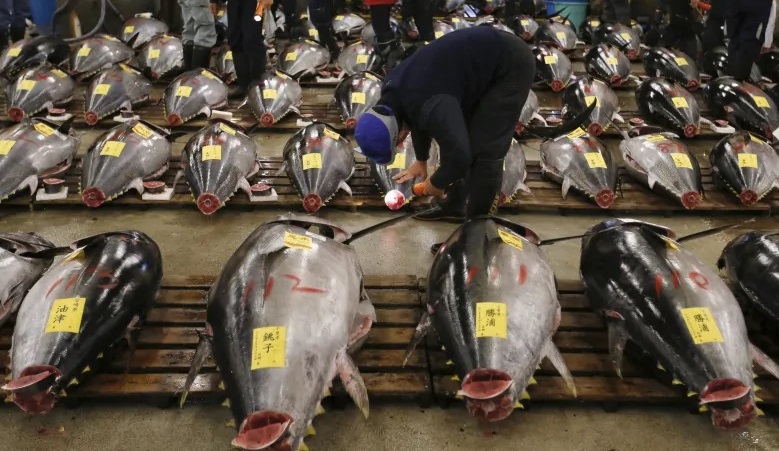
Bluefin (maguro in Japanese) are referred to as ‘black diamonds’ by fishermen who, in part due to pressure from those concerned with the species’ rapid decline, are encouraged to use more sustainable hand-line methods to hook the open water fish. (Toru Hanai/Reuters)
It notes that where once the extent of the fishing was extensive, but still limited, there are now virtually no tuna stocks anywhere that aren’t being hunted. Coulter says for example that Bluefin tuna used to comprise 20 per cent of catches in the 1950’s but now the level is “negligible”.
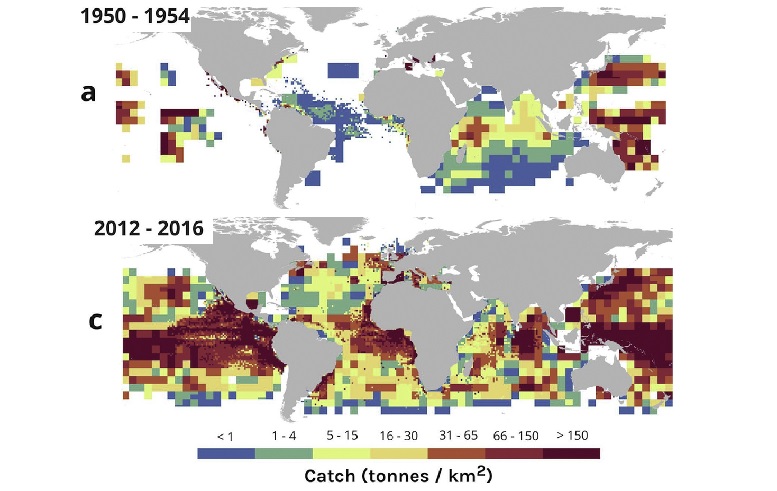
Comparing data, the researchers show how tuna fishing has expanded enormously from the 1950’s to present, as fleets grow and as they travel further to catch the dwindling species (Coulter et al)
Ocean tuna catches increased from around 310,000 tonnes in 1950 to over 4.1 million tonnes by 2016. Global landed catches as reported by the Regional Fishery Management Organisations (RFMO), plus preliminary estimates of unreported discards of the world-wide tuna fisheries increased from around 450,000 t in 1950 to approximately 5.6 million t in 2016, although the report notes the figure could be much higher.
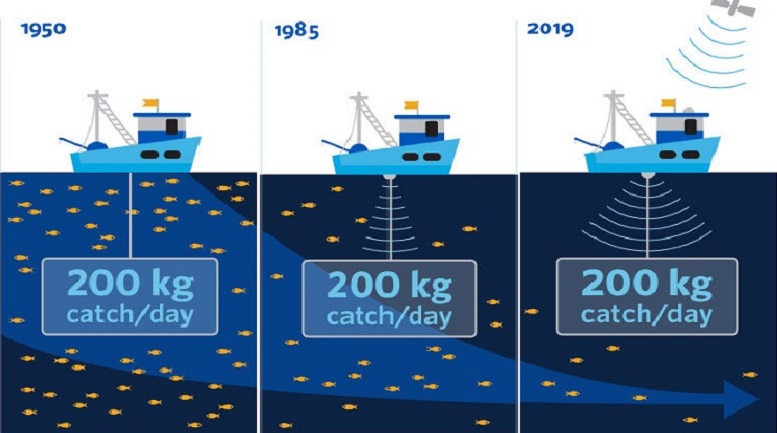
New technologies have allowed fishing fleets to double their potential capture power every 35 years, but as stocks are depleted that means the catch amounts remain the same. meaning a far higher percentage of remaining fish are being removed (UBC Institute of Oceans and Fisheries)
In addition, advances in technology allow fleets to locate remaining stocks and maintain the catch levels. Coulter says this hides the fact that there are fewer and fewer fish by giving the impression that because catch levels are the same, the stocks must therefore be stable.
Even though the report is very worrisome about the continued maximum exploitation of the world’s tuna fishery, especially Bluefin, Coulter notes that fleets only have to have observers on a mere 5 per cent of the vessels.
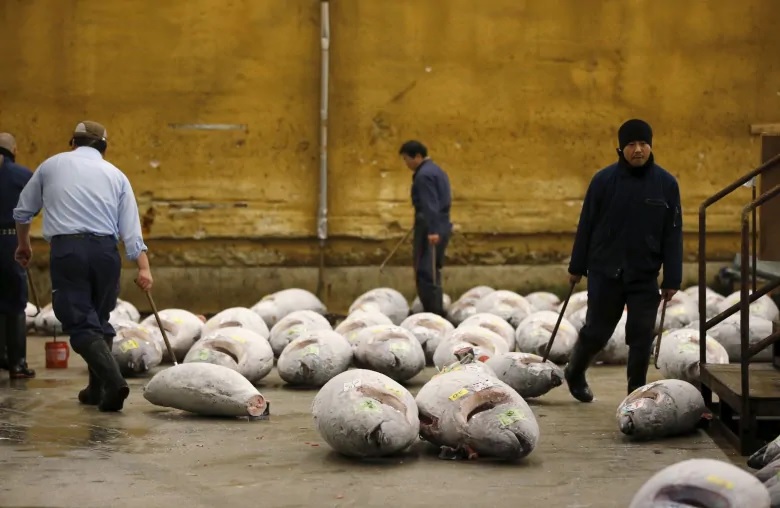
Bluefin tuna are often frozen at sea before arriving at the huge Tsukiji wholesale market in Japan where a single fish can sell for tens of thousands of dollars. (Toru Hanai-Reuters)
Thus Coulter says virtually all of the tuna boats are unmonitored and catch reports by vessels, and even by government agencies around the world, may be deliberately under-reported, further exacerbating the pressure on remaining stocks.
The report also mentions the issue of “by catch” the capture of species not being sought, or undersized fish. This includes many sharks, but the by catch is usually discarded overboard, for the most part dead or dying, further depleting the ocean. She says this substantial by-catch and disposal happens with no repercussions.
She notes that because of the lack of accurate information about catches, which is possibly higher or much higher than reported, accurate quotas are not possible, and thus the creation of a sustainable fishery. The report recommends much greater comprehensive reporting by the RFMO’s and that transparency and accountability are vital components for proper management.
additional information
- Sea Around Us; New database exposes Dangerous tuna fishing trends
- UBC- Science Faculty: New tech allows fleets to double capacity and deplete stocks faster
- Guardian (UK): F.Harvey: Jan 9/13: Overfishing causes Bluefin tuna to decline by 96%
- Guardian (UK); J Watts: Aug 23/18: Philippines crisis: They are taking out a generation of tuna
- Japan Times: jan 29/19: Bluefin tuna catches off Japan sluggish
- Thomson Reuters (via CBC): Sep 16/15: WWF: ocean fish stocks on brink of collapse
- Science: Mar 11/16: ending hide and seek of fishing vessels
- CBC: P Withers: Nov 21/18: Canada and other nations failing to protect bigeye tuna
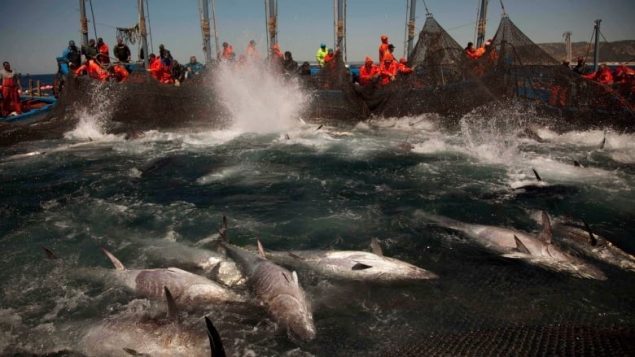






For reasons beyond our control, and for an undetermined period of time, our comment section is now closed. However, our social networks remain open to your contributions.